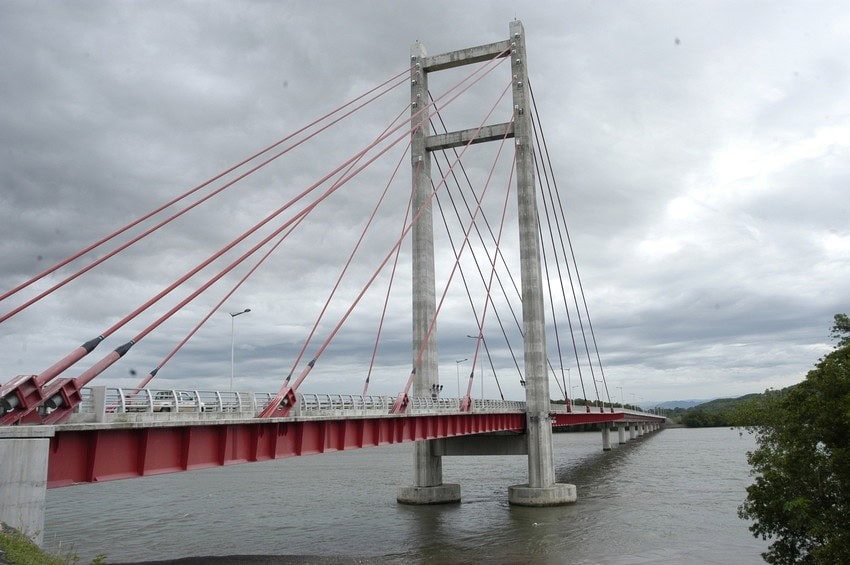After three months of work and as part of the celebration of the 200th anniversary of the annexation of the Nicoya, the government has fulfilled its promise to rehabilitate and reopen the La Amistad Bridge over the Tempisque River, facilitating transit for thousands of Guanacaste residents.
After 20 years of deterioration and significant damage caused by the 2012 earthquake, the La Amistad Bridge has been officially reopened to traffic. “The 780-meter-long structure, which links Guanacaste with the rest of the country, has been rehabilitated through specialized works that ensure its effectiveness, efficiency, and transparency,” authorities assured.
The reopening ceremony, which coincided with the celebration tour of the Bicentennial of the Annexation of the Nicoya Party, was attended by President Rodrigo Chaves and the Minister of Public Works and Transportation (MOPT), Mauricio Batalla.
The rehabilitation works included lifting the structure by 2 cm to replace the damaged supports and installing new ones that offer a better anti-seismic response. Additionally, new expansion joints, lighting, resurfacing, and marking of the road surface with thermoplastic paint were completed.
The project, led by CONAVI’s engineering team and executed by the Costa Rican company Estrumet Metalmecánica, cost ¢1,365 million (approximately $2.56 million USD), with an additional ¢135 million (approximately $253,500 USD) for resurfacing and signaling. Minister Batalla thanked all the entities and workers involved, highlighting their commitment and dedication in carrying out this complex work.
“On this occasion, we celebrate 200 years since the Annexation, a very special date to demonstrate that in our country we can complete public works on time, within budget, scope, and quality, which benefits thousands of Costa Ricans and contributes to the sustainable development of our nation,” said the Minister of Transportation, Mauricio Batalla.
With the reopening of La Amistad Bridge, locals will no longer have to cross the Tempisque River by boat or face long trips by bus, car, or motorcycle, significantly improving connectivity and mobility in the region.






